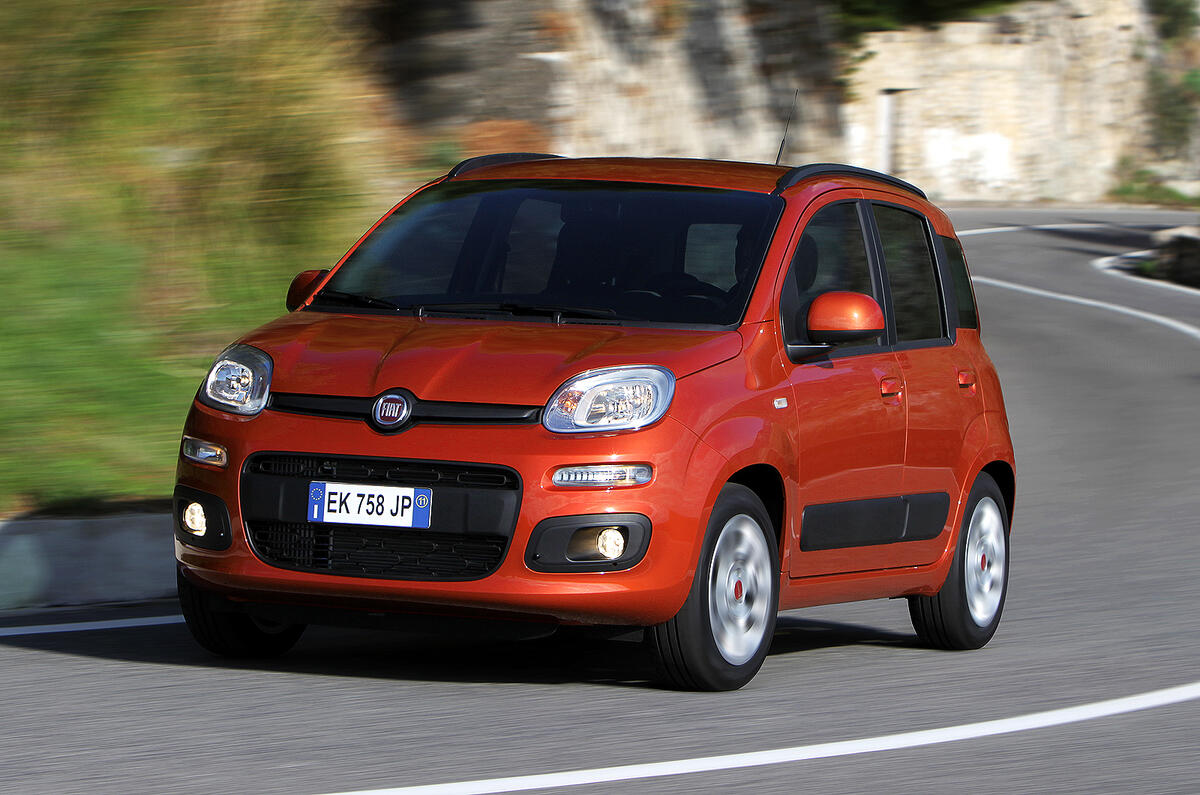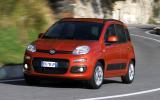What is it?
Well it’s not just a baby car, whatever the diminutive overall length of just 3650mm implies. The Fiat Panda has always been quite different in character from rivals similar in size and price. Others are called city cars or economy cars, the Panda is more of an “essential” car, created for many who will use it as their only car. Fiat boss Olivier Francois sums it up as “the official car for doing whatever the hell you like.”
The Panda is essential to Fiat in the sales sense, too. The company has averaged more than 200,000 Pandas a year for over 30 years. Production recently passed 6.5 million units, yet the new model due to hit British showrooms at the end of February is only the third generation.
What’s it like?
Fiat has preserved the essential Panda mechanical layout and many cost-saving chassis and suspension parts for the new model. The wheelbase is unaltered at 2300mm but the body is 114mm longer, 11mm taller and 65mm wider at the waistline. Aero drag factor is cut from an unimpressive 0.40 to 0.33. Body stiffness is improved, and Fiat also claims major cuts in noise and vibration from engine, wind and road. The new Panda now weighs 930 kilograms, about 60kg more than the equivalent outgoing model.
Inside, the emphasis is on stylish practicality. Fiat has redesigned the dash to improve layout and ease of use, and the fascia design is both appealing and extremely practical. Designers make great play of providing 14 different compartments for gadgets big and small.
There are big revisions to the Panda’s suspension (still MacPherson struts in front; coil-sprung twist-beam behind) that reduce understeer by 20 per cent, cut body roll by 35 per cent and make the electric power steering a lot more sensitive.
Fiat is backing up its 2WD models with a new generation Panda 4x4 with extra-strength suspension mountings and unique spring/damper/anti-roll bar rates delivering increased wheel travel. Drive to the rear wheels is through a hydraulically actuated multi-plate clutch ahead of the rear diff.
Three different engines are offered. Base engine is Fiat’s ubiquitous 1.2-litre 69bhp FIRE engine, there are two versions of the parallel twin-cylinder TwinAir engine, turbocharged (85bhp) and normally aspirated (65bhp), both of which use a developed version of Fiat’s uniquely flexible valve timing system, dubbed MultiAir II. Each emits less than 100g/km CO2. There’s also a turbodiesel option: the familiar 75bhp, 1.3-litre MultiJet II unit, producing just 103g/km CO2.
The Panda feels tall when you first slide behind the wheel, but much more roomy than the current model. Visibility is spectacular, the controls/dials are simple to operate. Even at low speed, the NVH improvements are instantly obvious. In particular, the Panda is much quieter than its predecessor on coarse surfaces and rides flatter.
The steering, still light, is far more informative. For all the talk of reduced understeer, the Panda will stlll push its front wheels, and body roll remains noticeable though never a problem.
The TwinAir turbo is as engaging as ever: you can drive it for economy and change up at amazingly low revs, but it’s more fun to drive using the revs. The 1.3 diesel is familiar from other Fiats: smooth, and frugal. The normally aspirated MultiAir is a bit of a disappointment. Probably better to choose the cheaper 1.2-litre FIRE. Our favourite in early tests was the 4x4, which rides high on big tyres, has long suspension travel, and generally behaves like a small Land Rover Discovery.


















Join the debate
Add your comment
Re: Fiat Panda TwinAir
Min, I have not checked your link but I suspect there will have to be some special editions sooner rather than later to get the sales they need. This does sound strange and we are back to the previous question of whether it is cheaper to fit certain equipment to every car than to charge extra for bits and pieces which in all probability should, like it seems VW believe, be standard.
Re: Fiat Panda TwinAir
Sorry to dig this thread back up, but I've just been on the Fiat website where the Panda specs and configurator have gone live. I find the specifications completely weird. Here's a link:
http://www.fiat.co.uk/showroom/comparatoroptions.aspx?id=25211&vars=319,319,319&ses=true&hash=showroom/new_panda/compare
£50 for a height adjustable seat, on every model? £50 for electric heated mirrors. Extra for a split rear seat. Extra for coloured door handles and mirrors (not bothered, but why?). Also, window airbags are standard, but they make you pay extra for side airbags. Normally it'd be the other way around.
Looking at what Volkswagen's Up offers as standard in comparison (leccy mirrors for example, which are handy), and VW seem to be the more generous brand (for once!)... in fact, I don't know if the Panda looks as good value as the 500, depending on what sort of car you're looking for, of course. I really want to like the Panda, and I'm sure it's a great car all-round, but equipment levels are important to some people.
Anyone else think the equipment lists look a tad WEIRD?
Re: Fiat Panda TwinAir
Supermanuel, i think the step between Panda 2 and Panda3 is at least as much as Golf 5 to Golf 6. Dont you agree?